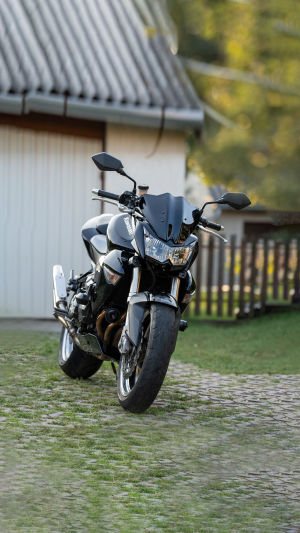Motorcycle riding is not merely a mode of transportation; it is an exhilarating experience that connects the rider to the road and surroundings in a way no other vehicle can.
One essential aspect of this experience is the motorcycle riding position. How a rider positions themselves on the motorcycle profoundly affects their control, comfort, and safety.
Let's delve into the intricacies of motorcycle riding positions, exploring the different types and their impact on the riding experience.
1. Upright Position
The upright riding position is the most common and easily recognizable. In this posture, the rider sits nearly vertical with a straight back, hands on the handlebars, and feet on the footpegs. This position is commonly found in standard, cruiser, and touring motorcycles. It offers a comfortable and relaxed ride, suitable for long journeys. The upright position allows the rider to enjoy the scenic views and easily communicate with other road users.
2. Sportbike Position
On the other end of the spectrum is the sportbike riding position. Characterized by a pronounced forward lean, the rider's torso is inclined towards the handlebars while the legs remain tucked behind. This position optimizes aerodynamics, enhancing speed and agility. The sportbike position allows the rider to engage in spirited cornering and rapid acceleration. However, it can be physically demanding, leading to rider fatigue on extended journeys.
3. Cruiser Position
Cruiser motorcycles feature a laid-back, low-slung design, with the rider's legs stretched forward. This position is ideal for leisurely, unhurried rides. The cruiser position provides a relaxed and comfortable experience, allowing the rider to soak up the surroundings while enjoying the gentle purr of the engine. However, maneuverability and cornering capabilities are limited in this position due to the forward leg placement.
4. Adventure Position
Adventure or dual-sport motorcycles are built for versatility, and their riding position reflects that. Riders on adventure bikes assume a neutral posture, sitting upright with a slight bend at the waist, and the legs are positioned to comfortably stand on the footpegs when needed for off-road adventures. This position allows riders to tackle diverse terrains with ease while maintaining comfort during long rides.
5. The Impact on Control and Safety
The choice of riding position has a direct impact on control and safety. The sportbike position enhances control and maneuverability, making it ideal for evasive maneuvers and quick braking. However, it may limit visibility due to the forward lean. In contrast, the cruiser position offers excellent visibility but may hinder quick reaction times. The adventure position combines elements of both, making it suitable for riders who seek versatility and control on and off-road.
6. The Role of Ergonomics
Ergonomics plays a crucial role in determining the comfort and safety of a riding position. An ergonomically designed motorcycle will have handlebars, footpegs, and seats adjusted to reduce fatigue and strain on the rider. An improperly fitted motorcycle can lead to discomfort, poor control, and, in the worst cases, accidents.
7. Adaptations for Long Rides
For long rides, it's essential to consider comfort. Some riders invest in additional accessories such as padded seats, backrests, and footpeg extensions to improve comfort and reduce fatigue during extended journeys. Ergonomics and customized adaptations ensure a comfortable and safe experience.
The motorcycle riding position is a critical element in the riding experience. It defines the rider's control, comfort, and safety. Different types of motorcycles offer distinct riding positions to cater to various riding styles and preferences. Whether you're leaning forward on a sportbike, relaxing on a cruiser, or ready for adventure on a dual-sport, the choice of position is a fundamental part of what makes motorcycle riding an exhilarating and personal journey. Riders must carefully consider their riding style, physical comfort, and safety requirements when selecting a motorcycle and its corresponding riding position. Ultimately, the art of the motorcycle riding position is about finding the perfect balance between control, comfort, and a connection to the open road.





